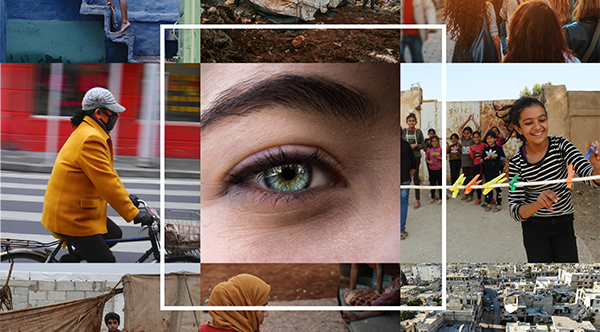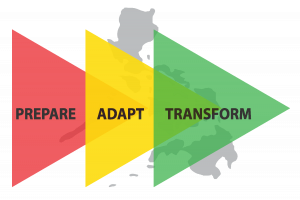In the newsletter circulated by United Nations Office for Disaster Risk Reduction (UNDRR), UN Secretary-General’s Special Representative for Disaster Risk Reduction Mami Mizutori reflects on the achievements made by different partner nations towards building disaster resilience and the global actions that need to be undertaken in line with Target E of Sendai Framework.
The Secretary-General expressed it very well in his message for World Tsunami Awareness Day (WTAD) on November 5: “Currently we are struggling with what some describe as a tsunami of death and disease due to COVID-19. This metaphor comes easily because living memory remains strong of the worst sudden onset disaster this century, the Indian Ocean tsunami of 2004 that took more than 227,000 lives.”
It is the uniquely deadly and destructive nature of tsunamis which led the UN General Assembly to add WTAD to the international calendar five years ago. WTAD has served as a rallying point not just for raising awareness of tsunami risk but disaster risk in general, and this year, the importance of disaster risk governance in particular.
#TsunamiDay was another opportunity to drive home the message that we need to increase the number of national and local disaster risk reduction strategies by 2020 in line with Target (e) of the Sendai Framework. It was a busy day which resulted in a huge response across our social media channels, reaching more than 1 million people, thanks to a campaign supported by the UN and countries on the front line of tsunami risk.
My morning started with the opening of the Third World Tsunami Museum Conference. Keeping alive the memory of past disasters and what we’ve learnt from them is key in raising tsunami awareness. I spoke about the ‘miracle of Kamaishi’, an incident which occurred during the 2011 Great East Japan Earthquake and Tsunami where school children acted on their learning to evacuate immediately and others in the community followed them, saving the lives of many.
It was clear to me listening to tsunami survivors and representatives of five featured museums from Indonesia, Japan, Portugal, Thailand and Hawaii, that visiting these memorials is often both very moving and deeply educational.
The Chair of the UNDRR Support Group, Amb Emilio Izquierdo of Ecuador, moderated our online panel discussion Ready for the Next Wave! He reminded the online audience that tsunamis do not happen in a vacuum. The cascading impacts from a tsunami can increase poverty and vulnerability to other events on disaster-prone coastlines.
UNDRR greatly values our partnership with IOC-UNESCO and it was encouraging to hear its Executive Secretary, Vladimir Ryabinin, highlight the value of Tsunami Ready initiatives in the Caribbean. UNDP’s Ronald Jackson emphasized the importance of institutionalizing best practice when it comes to preparedness and early warning. We also heard sharp insights and good practices into managing tsunami risk from an impressive line-up of Permanent Representatives from countries on the front-line of disaster risk: Indonesia, Jamaica, Japan, the Maldives and Portugal.
RESPONSE, RECOVERY AND PREVENTION
I first met the Prime Minister of Mongolia, Ukhnaagiin Khürelsükh, when Mongolia hosted the 2018 Asia Ministerial Conference for Disaster Risk Reduction in Ulaanbaatar. He has long been a strong advocate of disaster risk reduction and ensured in 2017, when he was the Deputy Prime Minister that all 22 major cities in the country joined the Making Cities Resilient Campaign.
The Prime Minister gave a major boost to the launch of the new Making Cities Resilient 2030 (MCR2030) initiative on 28 October, on the last day of the Daring Cities conference convened by Local Governments for Sustainability (ICLEI). He confirmed through a video message that his government has fulfilled its commitment to implement Target E of the Sendai Framework and that all its major cities are now implementing local DRR strategies in a country where 80% of its 2.8 million people live in cities.
MCR2030 will offer cities around the world a clear, three-stage resilience roadmap for assessing, planning and implementing risk reduction towards building their resilience. The resilience roadmap will link cities within a peer-to-peer learning environment and communities of practice, supported by access to tools, technical specialists and advisers.
MCR2030 builds on the success of the ten-year-old Making Cities Resilient Campaign, which concludes at the end of 2020 and has more than 4,300 city signatories. MCR2030 will run from January 2021 to the end of 2030.Our core partners of this initiative are: C40 Cities, ICLEI, International Federation of Red Cross and Red Crescent Societies (IFRC), Japan International Cooperation Agency (JICA), Resilient Cities Network (RCN), United Cities and Local Governments (UCLG), United Nations Human Settlements Programme (UN-Habitat), United Nations Office for Project Services (UNOPS), World Council on City Data (WCCD) and the World Bank Group.
LEARNING AND GUIDANCE
There has been an acceleration since 2017 of Governments’ efforts to develop disaster risk reduction strategies that are aligned with the Sendai Framework and coherent with other key global framework agreements including the Paris Agreement and the Sustainable Development Goals.
Our recently released status report on Target E implementation 2020 provides an overview of progress towards achieving this key objective of having a substantial increase in the number of national and local disaster risk reduction strategies in place by the end of this year. This report covers progress made by Member States from 2015 to 2019. The figures and analyses provided in this report build on self-assessments and data input by Member State Governments into the Sendai Framework Monitor as of 21 August 2020.
PARTNERING AND SHARING
Anticipate and Act — that was the title of the Stockholm High-Level Meeting on addressing the humanitarian impact of climate change co-hosted by the Swedish Government, UNDRR and WFP in collaboration with the Swedish Red Cross.
The meeting featured two panel conversations, one focused on food insecurity as a result of climate change and the other panel focused on solutions and how to reduce and anticipate risk.
It was clear consensus that more concrete steps need to be taken to protect the most vulnerable from the impacts of climate change. Sweden, leading by example, announced at this conference its support for the Horn of Africa Partnership for Early Warning and Early Action with UNDRR, WFP and the Intergovernmental Authority on Development (IGAD) as partners. A cell will be established at the IGAD Climate Predication and Application Centre in Nairobi to help operationalize a regional multi-hazard early warning system. Special attention will be given to flood and drought risk.
There was general agreement that there need to be closer links between humanitarian and development action. My own view is that humanitarian action needs to happen with an eye to avoiding a recurrence of predictable events and include disaster risk reduction measures, which will continue long after the response phase is over to reduce future vulnerability.
In a joint opinion piece with Peter Eriksson, Sweden’s Minister for International Development Cooperation, and David Beasley, Executive Director of the UN World Food Programme, I argue that in the context of the on-going climate emergency and COVID-19, there is “an opportunity to hardwire the priorities of climate change mitigation, adaptation and disaster risk reduction into national systems that are not yet fully equipped to deal with the grim realities of a riskier world.”
ADVOCACY
It is easy to get lost in the tragedy and numbers related to disasters, but I was pleased to be reminded on the 50th commemoration of Cyclone Bhola that prevention does save lives and that Bangladesh has made enormous strides in early warning and early action.
Estimates of the death toll from Cyclone Bhola which struck the coast of Bangladesh on November 12/13 in 1970 vary from 300,000 to one million. Cyclone Bulbul, a cyclone of similar strength, which struck the same coastal area in 2019 killed some 20 people. More than 2.4million people had been evacuated before the cyclone struck land as part of the Cyclone Preparedness Programme. The CPP is jointly run by the Government and the Bangladesh Red Crescent Society with the support of the International Federation of Red Cross and other partners.
In a solemn ceremony to remember the tragedy, Bangladesh Minister of Disaster Management and Relief, Dr. Emanur Rahman, highlighted and recognized the role of CPP volunteers in achieving a remarkable reduction in mortality from cyclones over the years. I would also like to salute the efforts of the 55,000 CPP volunteers so ably led by Mr. Ahmadul Haque, Head of the CPP, and Mr. Feroz Salahuddin, Secretary-General of the Bangladesh Red Crescent Society. It is encouraging to know that they are expanding their focus to cover other hazards; long may their work prosper.
* * *
#PreventionSavesLives
I hope that you will find this update useful and informative.
If you would like more information about UNDRR’s many activities, please do visit www.undrr.org and please — stay safe and well.

